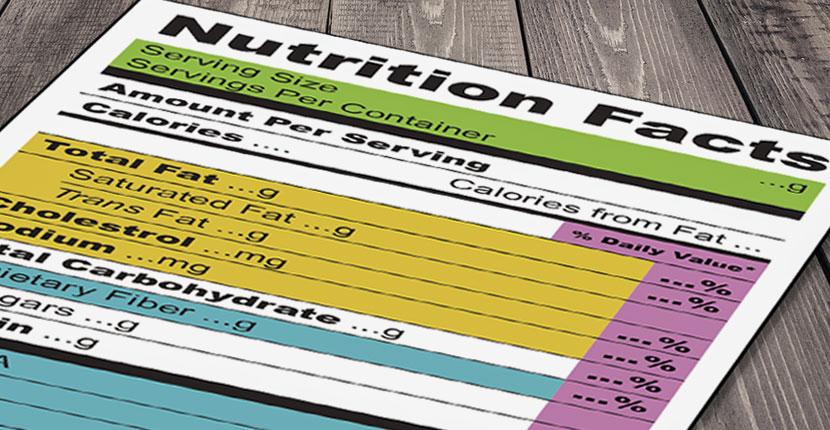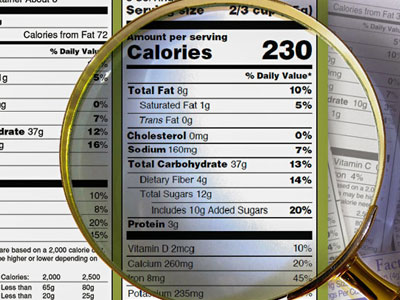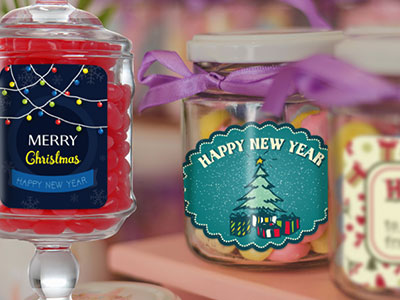Food labels have been around for over half a century in some countries, including the United States, but not many people paid attention to them in the beginning. With the rise of problems and diseases associated with poor eating habits, people are increasingly reading the information printed on food packaging labels.
The primary role of food labels is to inform consumers of the food’s nutritional values and ingredients, its manufacturer, health claims and possible allergens or some other potentially threatening food information. All this data helps people decide whether they will eat certain food, which is why food producers put a lot of effort into creating perfect labels for their product.
How Food Label Design Attracts Customers
Food producers have to consult their country’s regulations on proper food labeling before sending labels to be professionally printed. In the US there’s quite a handful of rules for proper food labeling regulated by the U.S. Food and Drug Administration and U.S. Department of Agriculture. Apart from closely following these instructions, you as a food producer want to focus on creating a visually effective food label that will set itself apart from the competition and attract more customers.
Food packaging and labels should reflect what’s unique about your food product. This is accomplished by creating a recognizable logo, food packaging and label design, using appropriate colors for what a company stands for, and coming up with a smart product name and any relevant additional copy. There’s a range of possible approaches to food packaging labels design: simple, elaborate, colorful, black and white, etc.
In summary, a successful food label will have the following:
- Appealing food label design (font, logo, images, colors)
- Relevant information and appropriate phrasing
- Effective message to consumers
Label Stock and Adhesives for Different Storing and Handling Conditions
Once the design is ready, you should think about where and for how long your food product and labels will be stored, so you can choose appropriate food label material. The FoodPackagingLabels.net team is happy to help out with all the steps of the food label design and manufacturing process, especially with advice on what label stock and adhesive to use for your product.
We offer a full range of choices as to the size, shape, material and quantity of food labels for printing. Depending on whether your product will be stored inside or outside, in cold, wet or hot conditions, we use different label substrates such as Ritrama Matte Paper, Fasson Deep Freeze, White Matte or Glossy Vinyl, Polypropylene with UV Varnish, Polyethylene, etc. The stock will depend on storage and handling conditions, as well as the label’s shape and size. If you want your label die-cut into an unusual shape, we will offer you a more flexible, conformable material.
Label adhesive is probably the most important label element, and its strength and initial tack usually dictate whether your label will strongly adhere to the product’s surface, or be able to be repositioned. At foodpackaginglabels.net you can choose between many different types of self-adhesive materials.
The Food Packaging Label Pros also specialize in adjusting the label size, shape, material and printing methods to your budget.
Free Printable Food Labels for Your Home
If you are not a food producer, but simply prepare food at home for your family, you don’t need FDA regulated food nutrition labels. However, if you have a big family and keep lots of food in the fridge or freezer, or if someone in your family has been diagnosed with an allergy to certain foods, it may be a good idea to carefully label your food. You can download free food stickers and print them out for your home food labeling needs. Parents whose children avoid eating veggies may find these printable lunchbox labels especially helpful in getting kids to eat healthy food.
Home food labeling is recommended for organizational purposes. Once your food is properly labeled and organized, you’ll have a clearer idea about what ingredients you are running out on, and what you definitely don’t need to buy. Food labels help with running a more economical, tidier and healthier household.
If you regularly freeze food, you may want to consider blank food labels professionally printed on a special freezer-ready material. At FoodPackagingLabels.net you can order cheap food labels that use special freezer grade adhesives making sure the labels don’t come off food packaging at low temperatures. It is not uncommon that labels printed at home on regular self-adhesive paper peel off or become unreadable when frozen.



